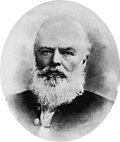This article needs additional citations for verification .(March 2024) |
| Premier of Queensland | |
|---|---|
 | |
 | |
| Department of the Premier and Cabinet | |
| Style |
|
| Status | Head of government |
| Member of | |
| Reports to | |
| Seat | 1 William Street, Brisbane |
| Appointer | Governor of Queensland by convention, based on appointee's ability to command confidence in the Legislative Assembly |
| Term length | At the governor's pleasure contingent on the premier's ability to command confidence in the house of Parliament |
| Formation | 10 December 1859 |
| First holder | Robert Herbert |
| Deputy | Deputy Premier of Queensland |
| Salary | $469,367 (as of 1 September 2021) [1] [a] |
| Website | www.thepremier.qld.gov.au |
The premier of Queensland is the head of government in the Australian state of Queensland.
Contents
- Constitutional role
- Premier's office
- List of premiers of Queensland
- Timelines
- See also
- Notes
- References
- External links
By convention, the premier is the leader of the party with a parliamentary majority in the Legislative Assembly of Queensland. The premier is appointed by the governor of Queensland.
The incumbent premier is David Crisafulli.









































